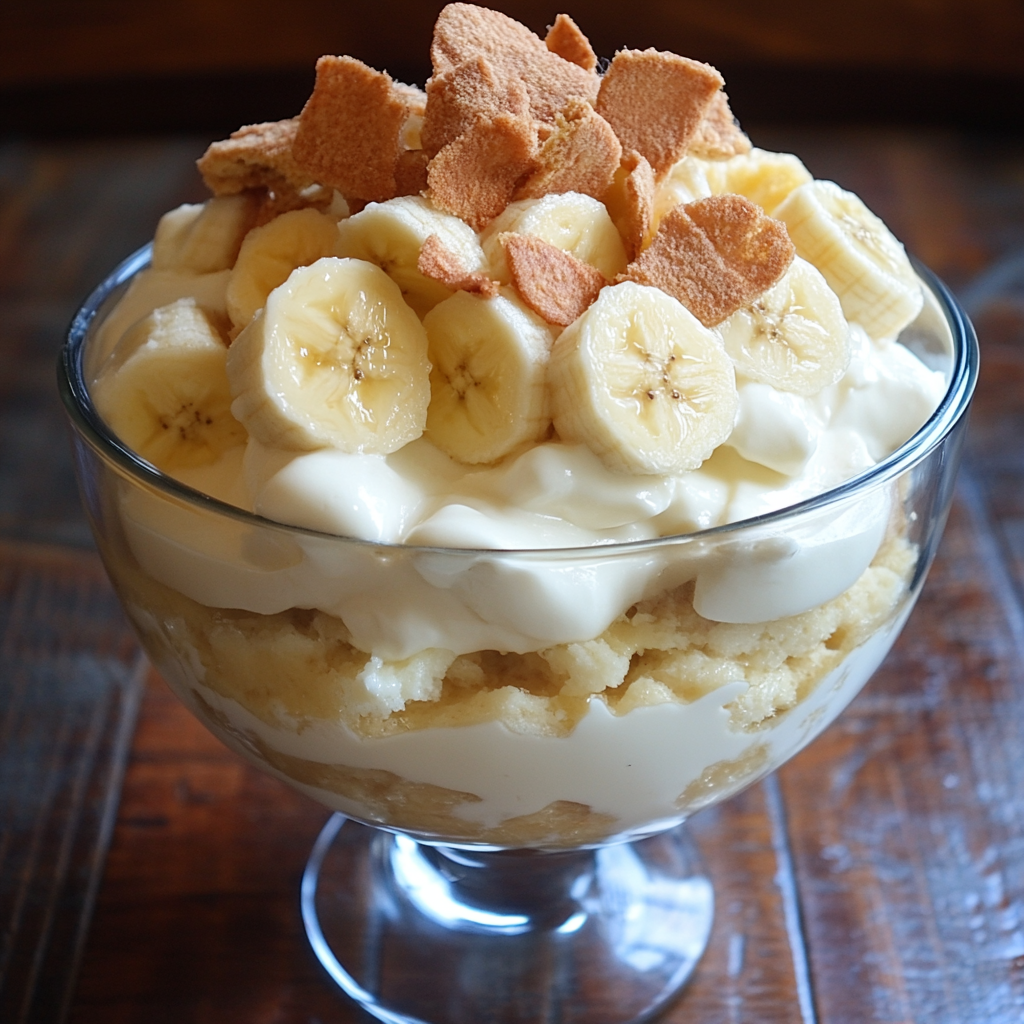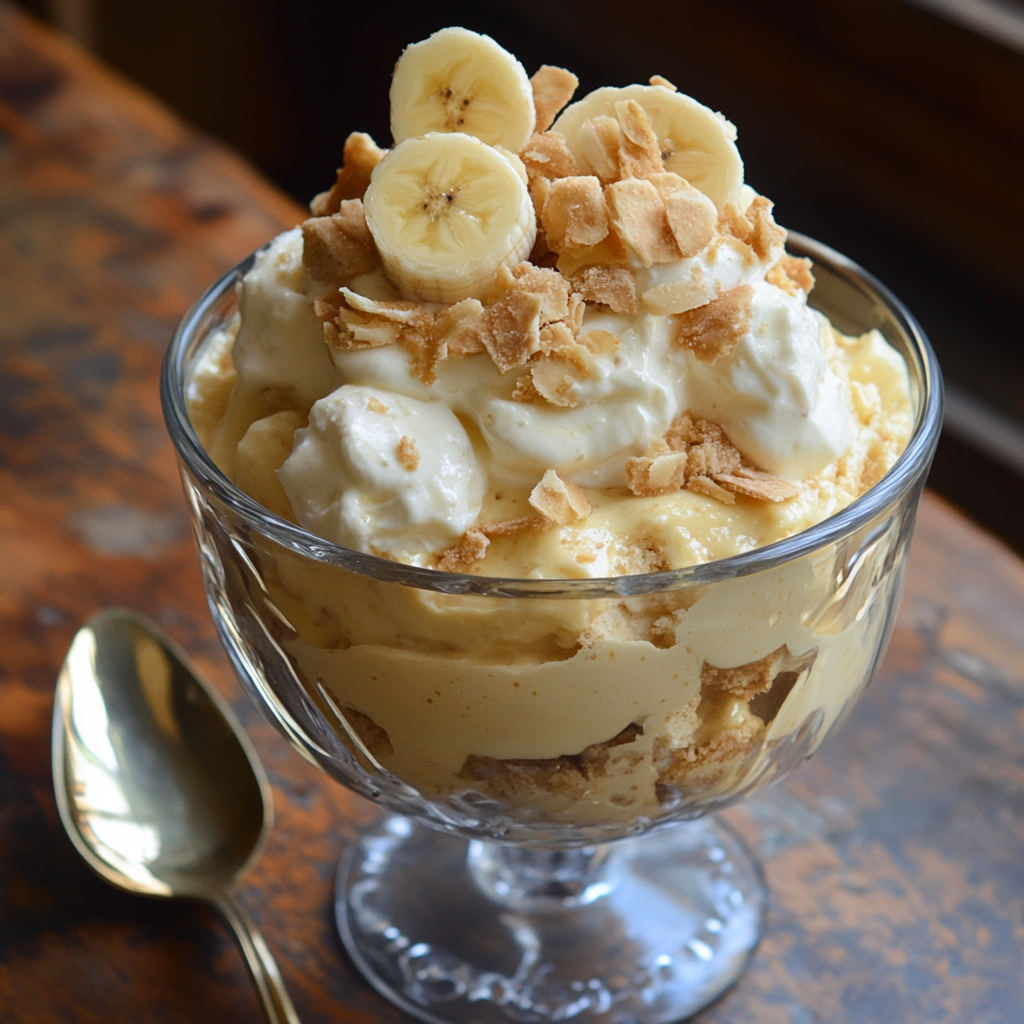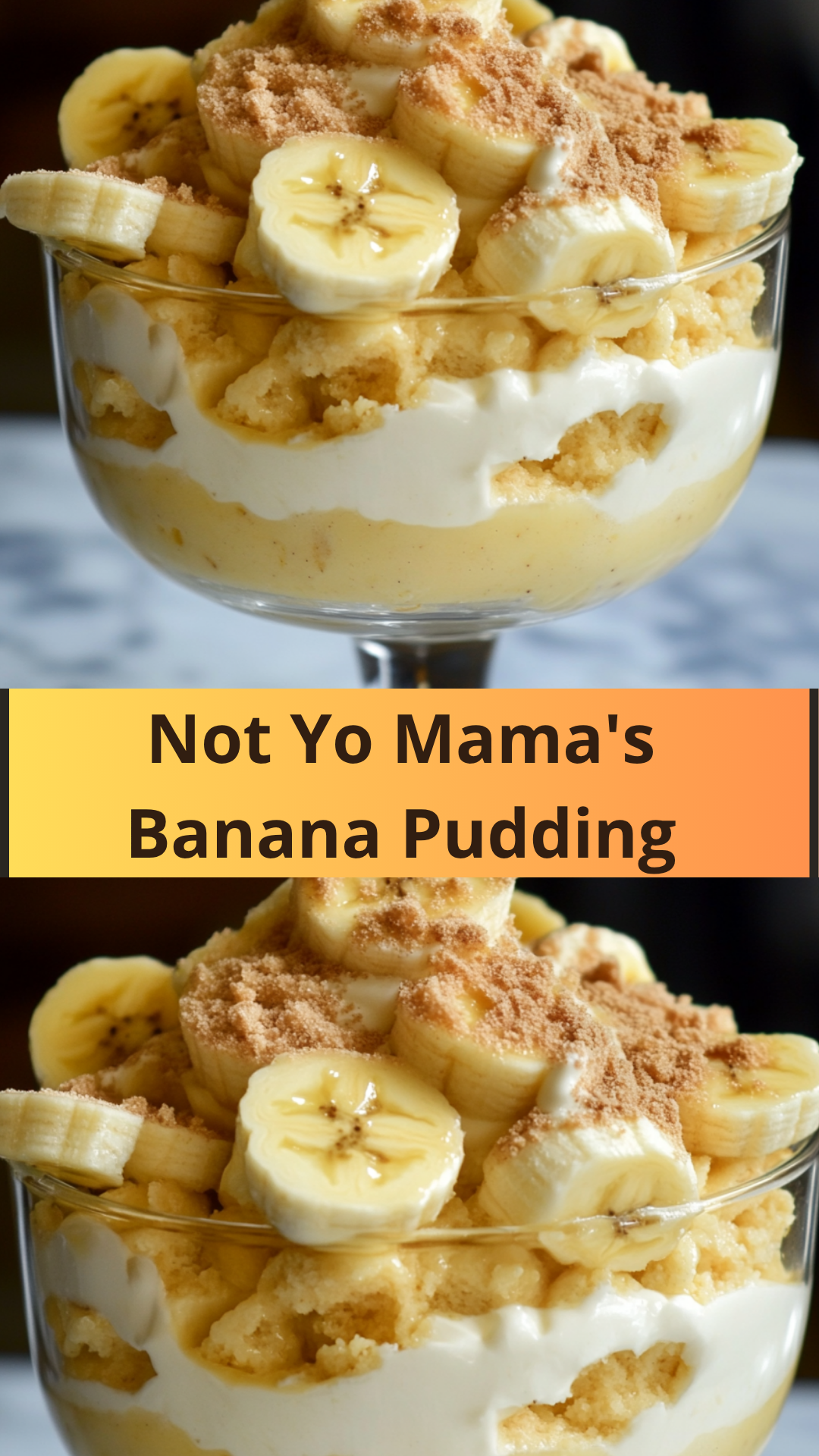NOT YO MAMA’S BANANA PUDDING: A Modern Twist on a Southern Classic
Introduction: Redefining Comfort in a Bowl
Banana pudding. Just the name conjures images of Southern charm, potluck gatherings, and the comforting sweetness of ripe bananas, vanilla wafers, and creamy custard. For many, it’s a taste of home, a culinary embrace passed down through generations. But what if that beloved classic got a makeover? What if it stepped out of the traditional casserole dish and presented itself with a bolder flavor, a more refined texture, or an unexpected ingredient twist?
Welcome to “Not Yo Mama’s Banana Pudding.” This isn’t just a recipe; it’s a culinary philosophy. It’s about honoring the soulful essence of the original while daring to innovate, to elevate, and to surprise. It implies a version that might be richer, creamier, more complex, or perhaps simply designed with modern palates or presentation in mind. It acknowledges the deep respect for tradition but asserts a creative freedom to evolve.
This exposition will delve into the delightful world of this “elevated” banana pudding. We will explore the cherished history of the classic, then pivot to understand the contemporary interpretations that fall under the “Not Yo Mama’s” umbrella. We’ll present a detailed recipe that embodies this modern spirit, offer expert tips for flawless execution, and dissect the sensory experience it delivers. From its visual appeal to its nutritional considerations and cultural significance, prepare to discover why this updated banana pudding is more than just a dessert—it’s a testament to culinary evolution, a conversation starter, and a truly unforgettable sweet indulgence that challenges and delights in equal measure.
Detailed History: From Humble Origins to Modern Marvels
To fully appreciate “Not Yo Mama’s Banana Pudding,” one must first understand the deep roots and beloved status of the classic Southern banana pudding. This dessert holds a unique place in American culinary history, particularly in the Southern states, and its evolution reflects changes in ingredients, technology, and cultural practices.
The Genesis of Classic Banana Pudding: A Southern Staple
The origins of banana pudding are intrinsically linked to the availability of its key ingredients and the culinary practices of the American South.
- Bananas Arrive in America: While bananas were known in the U.S. from the mid-19th century, they became widely available and affordable after the development of refrigerated shipping in the late 1800s. This made them a staple fruit across the country, even in areas where they couldn’t be grown.
- The Rise of Vanilla Wafers: Nilla Wafers (originally called Vanilla Wafers) were introduced by Nabisco in 1898. Their crisp texture, mild vanilla flavor, and ability to soften beautifully when layered with custard made them an ideal component for a pudding that required layers and absorption.
- Puddings and Custards: Custards and puddings have been popular desserts in America since colonial times, often serving as a way to stretch ingredients or utilize leftover milk and eggs. The concept of layered puddings with fruit was already present in various forms.
- Early Recipes: By the early 20th century, recipes for banana pudding began appearing in community cookbooks and magazines. These early versions typically involved layers of sliced bananas, vanilla wafers, and a cooked custard, often topped with meringue and baked briefly to brown the meringue. The simplicity of the ingredients and the comforting nature of the dessert quickly endeared it to home cooks.
- A Symbol of Southern Hospitality: Banana pudding became a quintessential Southern dessert, especially popular at potlucks, church picnics, family reunions, and holiday gatherings. Its ability to feed a crowd, its appealing sweetness, and its relatively inexpensive ingredients made it a go-to dish for communal events. It represents a warm, comforting, and unpretentious form of hospitality.

The Evolution of the Classic: Variations and Preferences
Over the decades, even the “classic” banana pudding saw subtle variations:
- Cooked vs. Uncooked Custard: Some recipes feature a fully cooked custard (often on the stovetop), while others opt for a simpler, “no-bake” version using instant pudding mixes or sweetened condensed milk, yielding a lighter, quicker preparation. The cooked custard generally offers a richer, more complex flavor.
- Meringue vs. Whipped Cream Topping: Traditionalists often insist on a meringue topping, baked until golden, for textural contrast and a classic look. However, the rise of whipped cream as a topping offered a lighter, creamier alternative, often preferred for its ease and ability to stay softer.
- Banana Ripeness: The ideal ripeness of bananas is crucial. Slightly firm but ripe bananas (yellow with a few brown spots) are preferred to avoid them becoming mushy or watery too quickly.
The Advent of “Not Yo Mama’s Banana Pudding”: A Culinary Rebellion (or Evolution)
The phrase “Not Yo Mama’s Banana Pudding” implies a deliberate departure from the traditional. It’s a playful challenge, a promise of something familiar yet undeniably new and improved. This trend is part of a broader culinary movement that seeks to elevate classic comfort foods through:
- Premium Ingredients: Using higher quality vanilla, artisanal wafers, organic dairy, or specialty bananas.
- Enhanced Textures: Incorporating elements for added crunch (like toasted nuts or caramelized bananas), or aiming for an ultra-creamy, silky-smooth custard.
- Flavor Complexity: Introducing new flavor profiles that complement or contrast with the original. This could include:
- Cream Cheese: A very popular addition to “Not Yo Mama’s” versions, cream cheese adds a tangy richness and incredible body to the custard, making it denser and more cheesecake-like.
- Sweetened Condensed Milk: Often used in tandem with cream cheese, it creates an intensely sweet, creamy, and no-bake base.
- Different Wafers/Cookies: Beyond Nilla Wafers, some variations use shortbread, Chessmen cookies (butter cookies), or even homemade vanilla wafers for a more refined taste.
- Boozy Infusions: A splash of bourbon, rum, or banana liqueur can add depth and warmth.
- Caramel or Dulce de Leche: Drizzling these elements introduces a new layer of sweetness and complexity.
- Spices: A hint of cinnamon, nutmeg, or allspice to complement the banana.
- Modern Presentation: Moving away from the large casserole dish to individual servings, trifles in glass bowls, or deconstructed elements for a more elegant dining experience.
- Reduced Sweetness (Paradoxically): While some “Not Yo Mama’s” are richer, others might subtly reduce the overall sugar for a more balanced sweetness, relying on the natural sugar of the bananas and the richness of the dairy.

The Cultural Significance of the “Not Yo Mama’s” Trend:
The rise of “Not Yo Mama’s” recipes across various comfort foods (like mac and cheese, fried chicken, etc.) reflects several cultural shifts:
- Food as Art and Innovation: A growing appreciation for culinary creativity, where chefs and home cooks alike are encouraged to experiment and put their unique stamp on traditional dishes.
- The Age of the Internet and Food Blogs: Online platforms have democratized recipe sharing, allowing new variations to spread rapidly and gain popularity outside traditional print media.
- Nostalgia Meets Modernity: A desire to revisit beloved childhood flavors but with a more sophisticated, adult palate in mind, or to adapt them for dietary preferences or contemporary lifestyles.
- Brand Building: For some businesses or home cooks, creating a signature “Not Yo Mama’s” version becomes a personal brand, denoting a superior or unique offering.

